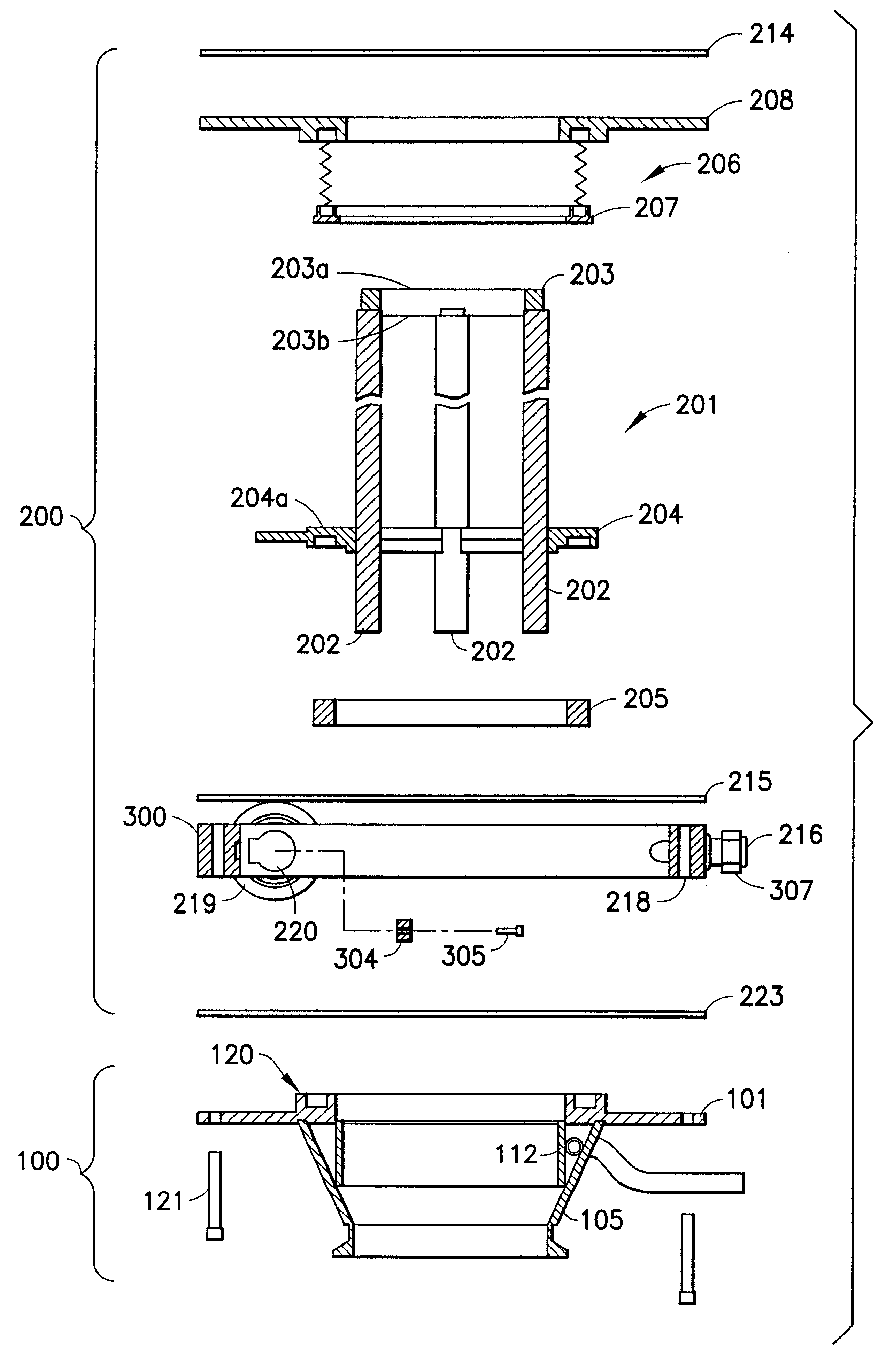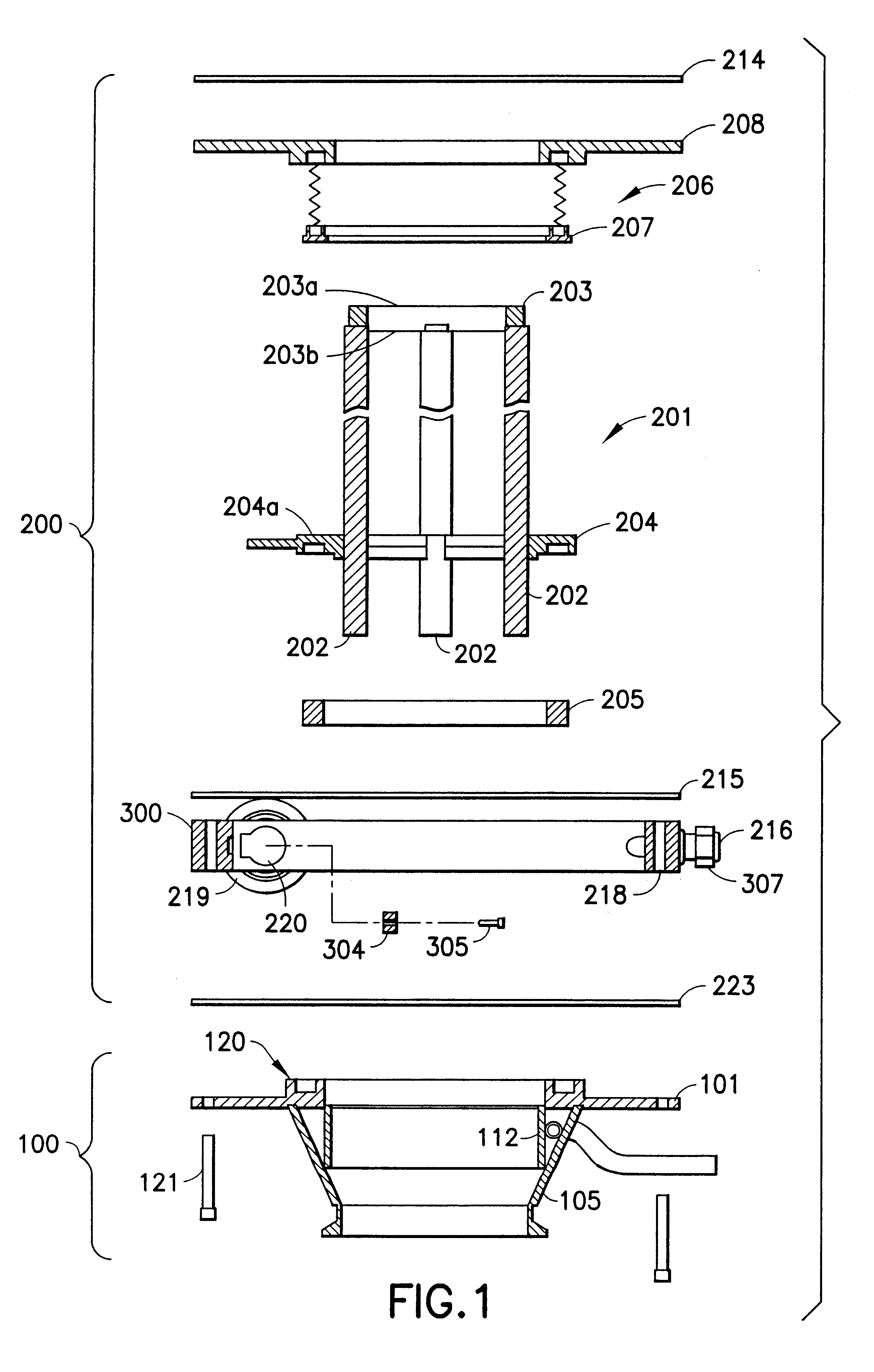Chamber cleaning mechanism
a cleaning mechanism and chamber technology, applied in the direction of machines/engines, solid removal, pipe elements, etc., can solve the problems of high toxic effluent gas, corrosion and buildup, and the blade assembly of the currently available rccm often lacks the strength to cut through the deposits formed on the reaction chamber wall
- Summary
- Abstract
- Description
- Claims
- Application Information
AI Technical Summary
Benefits of technology
Problems solved by technology
Method used
Image
Examples
Embodiment Construction
The present invention provides a new and improved RCCM and a new and improved water vortex. The RCCM and vortex aspects of the invention are suitably combined into one unit. FIG. 1 shows an expanded view of a combined RCCM / vortex apparatus of the present invention, including the water vortex unit 100 and the RCCM unit 200.
4.1 Water Vortex Unit
FIG. 2 shows an enlarged view of the water vortex unit 100. The water vortex unit generally comprises a top plate 101, a generally cone-shaped outer shell 105 and a baffle 112.
The top plate 101 comprises a top surface 102, a bottom surface 103 and a central opening 104.
The outer shell 105 comprises an outer surface 106, an inner surface 107, a top edge 108, a bottom edge 109 and a central opening 110 which is generally aligned with the central opening 104 of the top plate 101. The top edge 108 of the outer shell 105 is attached to and extends downwardly from the top plate 101. The diameter of the central opening 110 of the outer shell 105 narro...
PUM
| Property | Measurement | Unit |
|---|---|---|
| stroke length | aaaaa | aaaaa |
| pressure | aaaaa | aaaaa |
| length | aaaaa | aaaaa |
Abstract
Description
Claims
Application Information
 Login to View More
Login to View More - R&D
- Intellectual Property
- Life Sciences
- Materials
- Tech Scout
- Unparalleled Data Quality
- Higher Quality Content
- 60% Fewer Hallucinations
Browse by: Latest US Patents, China's latest patents, Technical Efficacy Thesaurus, Application Domain, Technology Topic, Popular Technical Reports.
© 2025 PatSnap. All rights reserved.Legal|Privacy policy|Modern Slavery Act Transparency Statement|Sitemap|About US| Contact US: help@patsnap.com



